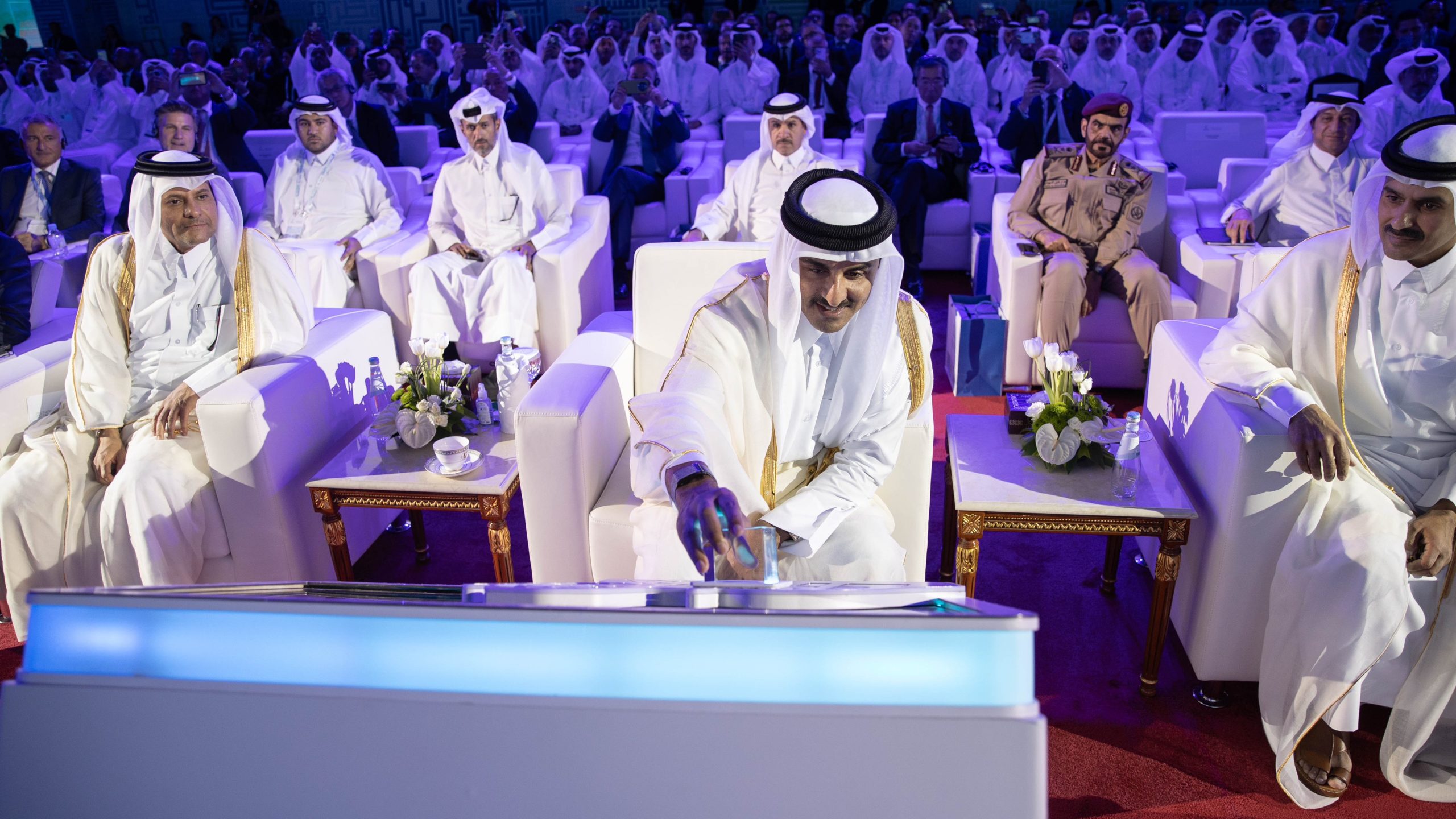The project is set to boost Qatar’s LNG production by more than 63% while adding 48 mtpa to the global production.
QatarEnergy officially laid the foundation brick for the mega North Field Expansion Project on Tuesday, marking a major step in the construction of the biggest liquified natural gas (LNG) project in the industry.
The state-owned energy company held a groundbreaking ceremony at the LNG facility in Ras Laffan Industrial City in the north of Qatar, with the attendance of Qatar’s Amir Sheikh Tamim bin Hamad Al Thani.
QatarEnergy CEO and Qatar’s Minister of State for Energy Affairs Saad Sherida Al-Kaabi started off the ceremony by underscoring the significance of the milestone.
“I am honoured today to welcome you all here in Ras Laffan City to celebrate the groundbreaking of an extremely crucial project, not just domestically, but also on a global scale,” Al-Kaabi told attendees at the event.
Al-Kaabi added that the project represents a “quantum leap” in energy and boosts Qatar’s progress towards major economic goals that is expected to reflect on other local sectors.
The official also said the Gulf state’s contribution to global LNG production comes at a crucial period for the industry, which has been affected by a range of geopolitical issues.
The event on Tuesday comes a year after QatarEnergy inked eight partnership deals with key energy giants globally, namely TotalEnergies, Eni, ConocoPhillips, Shell, and Exxon. ExxonMobil CEO Darren Woods described partnership with the the US-based entity as “historic”.
Qatar has also signed several LNG shipbuilding contracts in recent months, the latest of which was announced alongside Korea’s Hyundai Heavy Industries.
An ambitious project
The multibillion North Field Expansion Project comes under Qatar’s LNG endeavours and is split into two parts; the North Field East (NFE) and the North Field South (NFS).
NFE is set to ramp up Qatar’s LNG production from 77 to 110 mtpa (million tonnes per annum) by 2025, as the NFS will increase the production capacity from 110 to 126 mtpa by 2026.
Overall, the project is set to boost Qatar’s LNG production by more than 63% while adding 48 mtpa to the global production.
The project comprises six giant production lanes with a production capacity of eight million tonnes of LNG.
From LNG discovery to industry dominance
The wealthy Gulf state entered the realm of natural gas in 1971 when it made its inaugural non-associated gas discovery off the north-east coast, eventually establishing what is currently recognised as the North Field.
The gas-rich area, which Qatar shares with Iran, carries more than 900 trillion standard cubic feet of gas reserves and represents 20% of the world’s proven reserves.
It was not until the late 1990’s when the country made its first sale and purchase agreement with Japan’s Chubu Electric for 4 tonnes of LNG per annum, marking the beginning of a decades-long gas industry friendship between Tokyo and Doha.
Qatar’s role as a LNG giant was further highlighted last year during Europe’s energy crisis, in light of the Russian invasion of Ukraine.
Just weeks before the full-blown invasion, the US administration held discussions with Qatar on providing Europe with gas supply, particularly given that the Russian pipeline made up 40% of the region’s gas supply at the time.
However, Qatar had already established itself as the leading global exporter of LNG years ahead of the geopolitical events, meeting at least 5% of Europe’s gas demand.
While Qatar has repeatedly expressed its willingness to extend a helping hand to its European partners, it also maintained that it cannot unilaterally bridge the supply gap.
Qatar already holds long-term fixed contracts with several Asian customers— Japan, China, India and South Korea—who make up the majority of its exports, rendering the country’s capacity to divert only 10%-to-15% of its existing LNG production to Europe until its new projects are operational.
Beyond geopolitical crises, Qatar’s expansion of LNG production falls in line with global efforts in cutting emissions, with the Gulf state promoting the gas as a green transitional fuel.
The use of LNG also aligns with the Paris agreement, which aims to limit global warming through the reduction of emissions.
Unlike compressed gas, LNG requires less storage space and reduces greenhouse emissions by 30-40%. The gas also remains the cleanest and safest to transport due to its ability to evaporate in the event that it is accidentally released in the process.
Earlier this week, QatarEnergy’s CEO, also Qatar’s minister of state for energy affairs, said LNG gas sales from the project are “going very well” and could be sold out by the end of this year.







